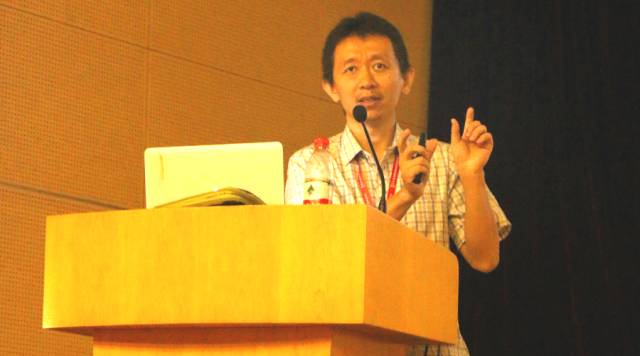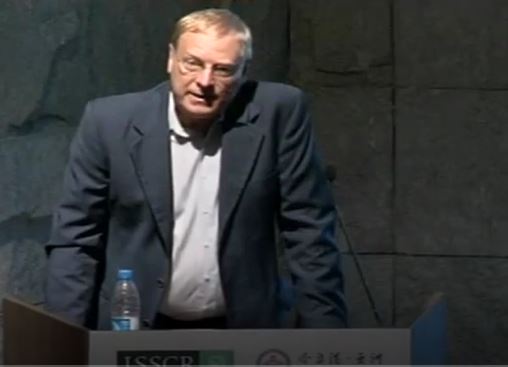表观遗传系列视频4 | 表观基因组学与肿瘤发生发展和转移
Richard A. Young
Member, Whitehead Institute
Professor of Biology, MIT
Email: young@wi.mit.edu
Young Lab: http://younglab.wi.mit.edu/young.html
Our laboratory is mapping the regulatory circuitry that controls cell state and differentiation in mice and humans. We use experimental and computational technologies to determine how signaling pathways, transcription factors, chromatin regulators and small RNAs control gene expression programs in embryonic stem cells and differentiated cells.
Transcriptional Regulatory Circuitry: We are interested in the regulatory circuitry that controls the gene expression programs in each of our cells. Since defects in gene expression can cause diabetes, cancer, hypertension, immune deficiencies and neurological disorders, improved understanding of this circuitry should lead to new insights into disease mechanisms and the development of new diagnostics and therapeutics.
Transcriptional regulatory circuitry consists of a specific population of protein and RNA regulators that work together to produce a gene expression program. The complete population of regulators involved in transcriptional regulatory circuitry has yet to be determined for any cell. However, for some cells, such as embryonic stem (ES) cells, key signaling pathways, transcription factors, chromatin regulators and small RNA molecules have been identified. We can use this knowledge of key regulators to begin mapping the core regulatory circuitry of ES cells and other cell types.
We have developed a powerful method called genome-wide location analysis, or ChIP-on-Chip, which uses chromatin immunoprecipitation and DNA microarrays together with computational analysis to map the genomic sites bound by protein regulators in healthy and diseased cells. These maps reveal the location of transcriptional regulators, chromatin regulators, and histone modifications throughout the genome of a cell. This information, when coupled with gene expression data, allows us to deduce portions of the cell’s transcriptional regulatory circuitry.
Regulatory Circuitry in Embryonic Stem Cells: Human development begins with a single fertilized cell and leads to an organism with 1013 cells with over 200 different cell types. Each cell type has a unique gene expression program that is controlled by a subset of the approximately 2000 protein regulators encoded in the genome together with an unknown number of RNA regulators. We have initiated mapping of human regulatory circuitry by focusing our efforts on embryonic stem cells and several differentiated cell types where key signaling pathways, transcription factors and chromatin regulators necessary for establishment and maintenance of cell state have been identified. We have augmented our study of human cells with similar studies in murine cells, where genetic manipulation is more feasible.
Embryonic stem cells are a pluripotent, self-renewing cell type that give rise to differentiated cells during embryogenesis. How pluripotency and self-renewal are regulated is poorly understood, but the transcription factors Oct4 and Nanog, which are expressed exclusively during preimplantation development and in ES cells, have been shown to be critical for these key features of ES cells. We discovered that Oct4 and Nanog associate with active genes involved in cellular proliferation and silent genes encoding most developmental transcription factors. We postulate that Oct4 and Nanog are required for pluripotency because they repress genes encoding transcription factors that are key to differentiation and development. This may explain why genetic perturbation of these “pluripotency regulators” causes ES cells to begin differentiating.
Transcription factors and chromatin regulators contribute to the transcriptional regulatory circuitry responsible for pluripotency and self-renewal in embryonic stem cells. Polycomb group proteins are chromatin regulators that are essential for early development in metazoans but their contributions to human development are not well understood. We have found that Polycomb Repressive Complexes (PRCs) occupy large portions of the genes encoding developmental regulators that are also bound by Oct4 and Nanog. Thus, one role for PRCs in ES cells is to contribute to repression of genes encoding developmental transcription factors which, if expressed, would cause ES cells to differentiate.
While the outlines of the core transcriptional regulatory circuitry of ES cells are emerging from these and related studies, we are also beginning to map the core circuitry of T lymphocytes, muscle and neural cells. Each of these differentiated cell types has several “master regulators”, identified in previous studies, whose target genes have yet to be identified, thus providing a logical starting point for mapping the transcriptional regulatory circuitry of these cells.
Young received his PhD from Yale University in 1975, and became a Whitehead Member in 1984. Scientific American recognized him as one of the top 50 leaders in science, technology and business in 2006 and his awards include a Burroughs Wellcome Scholarship, the Chiron Corporation Biotechnology Research Award, and Yale’s Wilbur Cross Medal. Young has served as an advisor to Science magazine, the National Institutes of Health and the World Health Organization.
本视频来源于网络,版权归属于原作者,如有侵权,请联系小编撤稿。



